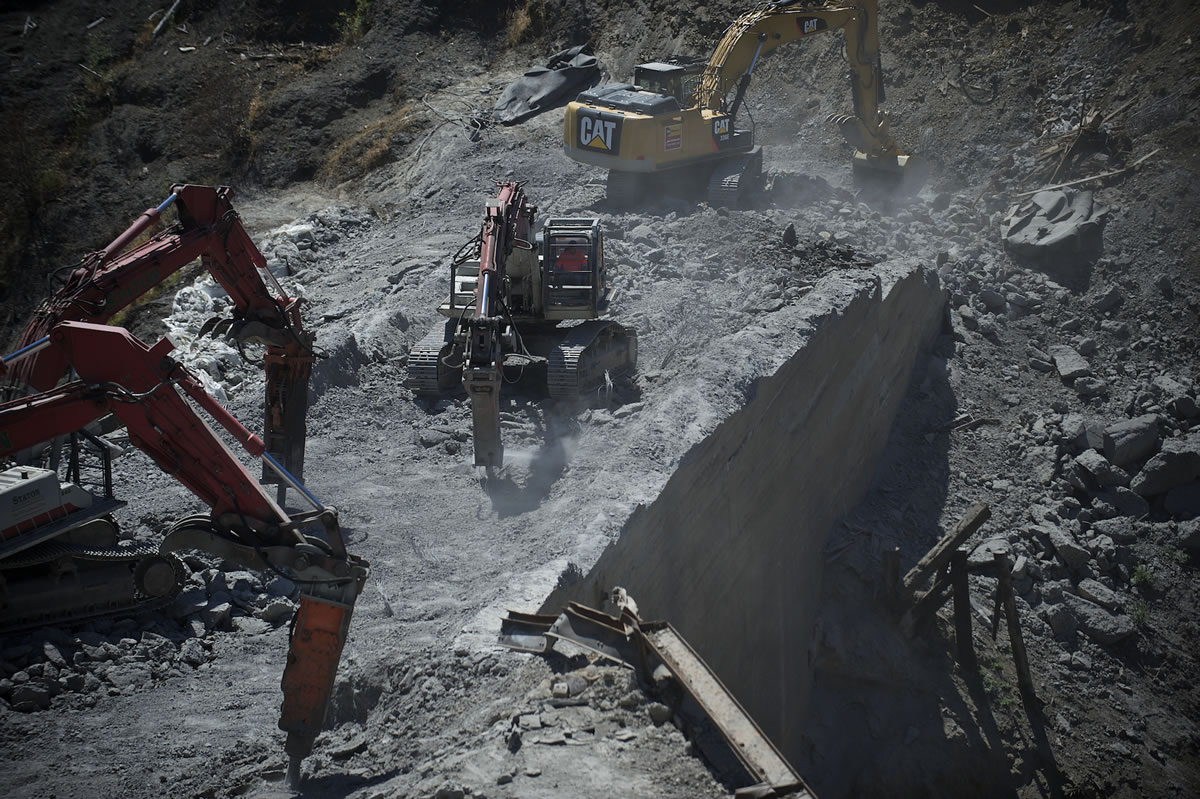It started with a bang, but the dismantling of Condit Dam has settled into a gradual, methodical grind since it picked up in earnest earlier this year. The process hasn’t been as dramatic as the dynamite blast that breached the 125-foot-tall structure in October.
Turns out, the fireworks may not be over yet.
PacifiCorp this week asked federal regulators for permission to conduct additional blasting as part of the removal process. As many as nine blasts — including three test shots — could ring out before the dam is gone later this summer.
Work crews had considered explosives as a possibility near the end of the removal process, said PacifiCorp spokesman Tom Gauntt. Difficult terrain near the bed of the White Salmon River made it a necessity, he said.
“As they got further down, they saw the limitations of where they were and how to get to the finish line from where they were,” Gauntt said.
To be clear, explosives used under the latest plan would be on a much smaller scale than the blast that released a free-flowing White Salmon River for the first time in nearly a century. That burst came from 700 pounds of dynamite in a single shot. Blasting this summer would use, at most, only 25 pounds of explosives at a time, according to plans submitted to the Federal Energy Regulatory Commission.
PacifiCorp has requested approval by Aug. 17. The Portland-based utility hopes to have the dam completely removed by Aug. 31.
“It’s a race to the bottom,” Gauntt said.
PacifiCorp would use explosives to break up concrete in the lower section of Condit Dam, where the White Salmon River snakes through a relatively narrow channel surrounded by bedrock. That setting simply doesn’t leave room for the same machinery that’s chipped away at the upper portions of the dam for the past several months, Gauntt said.
Crews under lead contractor JR Merit could use up to six blasts to help finish the job. They hope to produce “concrete rubble” that trucks will then haul away from the site, according to the application. If broken concrete ends up in the White Salmon River, plans call for excavators to pull “any fugitive pieces” out.
Signs of life
How many blasts occur will depend on how far along the demolition process is when it starts, Gauntt said. If crews make more progress than expected, some blasts may not be needed, he said.
Crews are spreading the concrete — about 35,000 cubic yards when it’s all said and done — along the former flow line that once carried water to the facility’s powerhouse to generate electricity. Most of the wood that comprised the line itself is going to a landfill.
PacifiCorp, which owns Condit Dam and the surrounding land, decided to decommission the hydroelectric facility last year rather than install costly fish passage upgrades. As of last week, the dam was about half gone. And the White Salmon River, which flows into the Columbia River near the town of White Salmon, has already started to show signs of new life. Biologists spotted migrating steelhead well above Condit Dam earlier this week — a welcome sign of recovery for those closely watching the evolving landscape. That means fish are swimming upstream through the opening at the bottom of Condit Dam, even as crews take it apart.
The latest blasting plan doesn’t directly address fish impacts, though explosions would occur near the river’s water line. The torrent of sediment and water that followed last year’s breach was believed to annihilate all life in its path downstream at the time.




